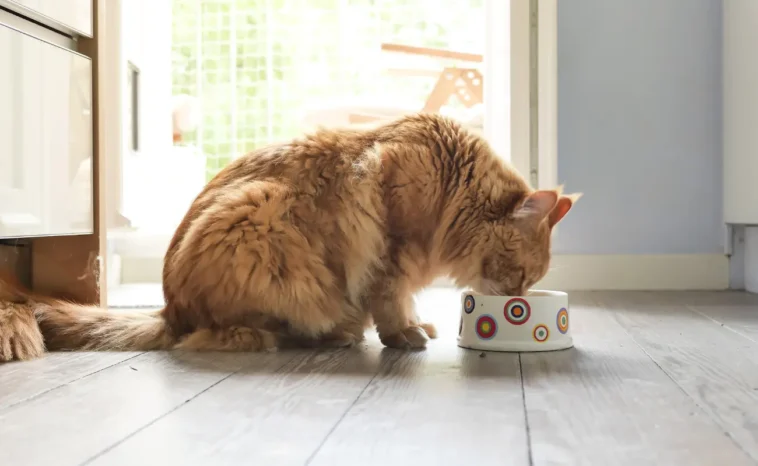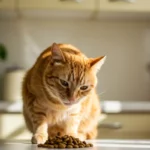Have you ever wondered how much food for adult cat is truly necessary to keep your feline friend in top shape? Figuring out the right feeding amounts can be surprisingly complex—after all, each cat has unique nutritional needs. But ensuring you provide the correct portions is crucial for their overall well-being. In this comprehensive guide, you’ll learn not only how much food for adult cat to provide but also the reasons behind portion recommendations, along with helpful tips and expert insights. If you’re looking to keep your cat healthy and happy, you’ve come to the right place.
How much food for adult cat is a question that resonates with new and experienced cat owners alike. In this article, you’ll discover practical guidelines for both wet and dry cat food, answers to common questions, and tips to overcome challenges related to feeding. By the end, you’ll have a solid understanding of why it’s so essential to get the portions right—and how doing so can dramatically benefit your cat’s health.
Internal Link Suggestion: Don’t forget to check out our in-depth guide on How to Choose the Best good quality cat food for Your Feline Friend to further enhance your cat’s overall diet plan.
how much food for adult cat
Overview
Determining how much food for adult cat typically involves considering factors such as age, weight, activity level, and overall health. Cats, unlike many other pets, are obligate carnivores. This means they have specific dietary requirements that rely on high-quality protein sources. Balancing these protein needs with the right number of calories is essential to maintain a healthy weight and support vital bodily functions.
Many cat owners start by looking at the guidelines on cat food packaging. These guidelines often provide a recommended daily amount based on your cat’s weight. However, these figures are general recommendations and may need tweaking to suit your cat’s unique metabolism and lifestyle. For instance, a highly active cat that spends hours roaming outdoors will require more calories than a sedentary indoor cat.
In this section, we’ll break down how much dry food for adult cat and how much wet food for adult cat you should consider, as well as other crucial factors that can help you make informed decisions about cat food and cat health.
Wet vs. Dry Food Considerations
Feeding your cat primarily wet or dry food—or a combination of both—significantly impacts portion sizes and overall feeding frequency. Let’s look closer at some essential considerations for each type.
How Much Dry Food for Adult Cat
Dry food is a convenient, shelf-stable option that many cat owners prefer. It typically has a higher caloric density compared to wet food, meaning a smaller amount of dry food can pack more calories. As a rule of thumb, an adult cat weighing around 8–10 pounds may need anywhere from 1/3 to 1/2 cup of dry food per day. This can vary widely based on the specific product’s calorie content and your cat’s individual needs. Always check the packaging for the calorie count, and keep in mind that different brands have varying densities.
Key factors affecting how much dry food for adult cat include:
- Age and life stage: Even among adult cats, some may be “young adults,” while others might be “senior adults.” Energy needs will differ between these two age groups.
- Activity level: A cat that runs around the house all day vs. one that naps continuously has markedly different calorie requirements.
- Metabolic rate: Just like humans, cats have different natural metabolic rates. Some might burn more calories at rest, while others store them.
How Much Wet Food for Adult Cat
Wet food offers several benefits—most notably increased moisture content, which helps support kidney function and cat health. Because wet food is less calorie-dense, you may need to serve more of it by volume to meet your cat’s daily energy needs. Typically, a single 3-ounce can per 3–4 pounds of body weight per day is suggested, but this, too, depends heavily on the brand and the cat’s individual metabolism.
Key factors affecting how much wet food for adult cat include:
- Moisture content: Most wet food contains 70–80% moisture, which can help cats stay hydrated, especially if they’re not big drinkers.
- Protein quality: High-quality proteins (chicken, turkey, fish) are better utilized by your cat’s body, potentially reducing the needed portions.
- Cat’s preference: Some cats show a strong preference for wet food, encouraging them to eat more or less. Watch your cat’s weight if they’re devouring every morsel.
Combining Wet and Dry Food
Many cat owners opt to combine wet and dry food for their pets. This balanced approach can provide the best of both worlds: the hydration benefits of wet food plus the convenience and cost-effectiveness of dry food. In these cases, portion control becomes even more nuanced. You’ll have to subtract some dry food if you’re feeding wet food, and vice versa, to avoid overfeeding.
Common Questions About how much food for adult cat
People often have several questions about feeding an adult cat, especially when they’re trying to navigate portion sizes, types of food, and best practices. While we have a dedicated FAQ section later, here are some broader points that commonly arise.
-
Should I feed my cat once or multiple times a day?
Most experts recommend splitting daily food intake into two or more meals. This mirrors a cat’s natural hunting behavior in the wild (where they’d catch small prey multiple times a day) and helps avoid overeating in one sitting. -
Is it okay to free-feed my cat?
Free-feeding is leaving dry food out all day for the cat to eat at will. While this can be convenient, it might lead to overeating, especially if your cat is less active. If you notice weight gain or health issues, you may need to switch to scheduled meals. -
How do I know if I’m overfeeding or underfeeding my cat?
Monitor your cat’s weight, body condition (can you feel the ribs?), and energy levels. If your cat starts to gain or lose weight unexpectedly, adjust the portion sizes. -
Should my cat’s food intake change if they’re spayed or neutered?
Spaying or neutering can reduce a cat’s daily energy requirements, so you might need to slightly lower their calorie intake to prevent weight gain.
Tips for Calculating how much food for adult cat
Understanding how much food for adult cat to offer can be simplified by following a few practical steps. Each cat’s needs vary, but these tips will help you gauge a suitable starting point.
-
Calculate Calorie Requirements
- Adult cats usually need around 20–35 calories per pound of body weight per day, depending on their activity level and body composition.
- For an average 10-pound cat, that’s 200–350 calories daily. Dry food can range from 300 to 400 calories per cup, while wet food can vary from 70 to 120 calories per 3-ounce can.
-
Check Food Labels
- Look for the “calorie content” on the packaging. This is typically listed as kcal/kg and kcal per cup or can.
- Adjust portion sizes based on your cat’s weight gain or loss over time.
-
Weigh Your Cat Regularly
- Use a small digital scale or weigh yourself holding the cat and subtract your weight. Do this monthly or bi-monthly.
- If your cat is gaining or losing weight beyond what’s healthy, adjust the food intake accordingly.
-
Use Measuring Cups or Scales
- Guessing can lead to underfeeding or overfeeding. Use a proper measuring cup or a small kitchen scale to ensure accuracy.
-
Monitor Behavior
- If your cat is constantly begging for food and losing weight, you might not be feeding enough.
- If your cat ignores the food and starts to gain weight, reduce portions.
By systematically applying these tips, you’ll be on the right track to providing optimal nourishment without going over or under.
Challenges and Solutions Related to Cat Feeding
Feeding an adult cat may seem straightforward, but challenges often arise that can make portion control and nutrition management more complex.
Challenge 1: Overeating and Obesity
One of the most common issues cat owners face is overeating, which leads to obesity. Overweight cats are at greater risk of diabetes, arthritis, and other health problems.
- Solution: Practice portion control and regular weigh-ins. Switch to measured, timed feedings instead of free-feeding if your cat consistently overeats. Opt for high-protein, low-carb cat food to help your cat feel full without excessive calories.
Challenge 2: Picky Eaters
Some cats are notoriously picky about texture, flavor, or even the shape of kibble. This fussiness can make it hard to establish a consistent feeding routine and portion size.
- Solution: Try different protein sources or a mixture of wet and dry foods. Gradually introduce new foods to avoid digestive upsets. Be patient and note which brands or textures your cat prefers.
Challenge 3: Multi-Cat Households
Feeding multiple cats with varying nutritional needs can be a juggling act, especially if one cat is overweight and another is underweight.
- Solution: Feed cats individually in separate rooms if possible. That way, you can customize portions and types of food for each cat’s needs without the risk of them stealing from each other’s bowls.
Challenge 4: Health Conditions
Certain health conditions like kidney disease, diabetes, or food allergies require specialized diets. This complicates how much food and what kind of food you give your cat.
- Solution: Consult with a veterinarian for a tailored feeding plan. Special diets might have different calorie densities and portion suggestions based on medical requirements.
Benefits of Proper Feeding Schedules
Establishing a well-thought-out feeding schedule for your adult cat offers numerous advantages beyond weight management. By adhering to recommended portion sizes—be it how much dry food for adult cat or how much wet food for adult cat—you’ll promote better cat health overall.
-
Maintaining a Healthy Weight
- Consistent portion sizes help your cat avoid the cycle of hunger and overeating.
- Preventing obesity also reduces the risk of diseases like diabetes and joint problems.
-
Improved Digestion
- Regular meal times can help regulate bowel movements and digestion.
- Avoiding overfeeding reduces the chances of gastrointestinal issues such as vomiting and diarrhea.
-
Stable Energy Levels
- Feeding smaller meals throughout the day prevents energy spikes and crashes.
- This can make your cat more active and playful, improving their mood and well-being.
-
Better Hydration
- Incorporating wet food increases your cat’s moisture intake, supporting kidney function and overall hydration.
- Adequate hydration is especially crucial for cats prone to urinary tract issues.
-
Enhanced Bonding
- Scheduled feedings become predictable routines, strengthening the trust and bond between you and your cat.
- Mealtimes can be positive, bonding experiences when you offer gentle pets and reassurance.
Expert Opinions or Research on Cat Feeding
Veterinary nutritionists and feline experts consistently emphasize that there is no one-size-fits-all approach to feeding adult cats. According to Dr. Amelia Bennett, a certified veterinary nutritionist, you should “evaluate your cat’s body condition score (BCS) regularly and adjust feeding amounts as needed, rather than relying solely on package guidelines.”
Additionally, research from leading veterinary journals suggests that cats thrive on diets rich in animal-based proteins. For example, a study published in the Journal of Feline Medicine and Surgery found that diets with at least 35–40% protein on a dry matter basis can better support muscle mass and healthy weight. This means paying close attention to the protein percentages on cat food labels and being mindful of your cat’s individual reactions to these foods.
Key takeaways from expert research include:
- Regular Veterinary Checkups: Monitoring your cat’s weight and overall health with a professional ensures you’re on track with portion sizes.
- High Protein, Moderate Fat, Low Carbs: This macronutrient ratio typically aligns best with a cat’s natural dietary needs.
- Individual Variations Matter: Each cat’s metabolism is unique, so stay flexible and observe changes in weight or behavior closely.
Frequently Asked Questions (FAQ)
-
How many meals a day should my adult cat have?
Ideally, offer your cat at least two meals per day—one in the morning and one in the evening. However, some cats do well with three or more smaller meals. The key is to ensure the total daily calorie intake aligns with your cat’s needs, which you can determine by tracking weight and body condition. -
Does wet food expire faster than dry food?
Yes, wet food spoils much quicker once opened due to its high moisture content. Always refrigerate unused portions and discard any leftovers in your cat’s bowl after a few hours to avoid bacterial growth. Dry food can be left out longer but still needs to be kept in a cool, dry place and sealed to maintain freshness. -
Should I worry about my cat not drinking much water if I feed wet food?
Typically, if your cat’s diet consists primarily of wet food, they’ll get a substantial portion of their daily water intake from the food itself. However, always provide fresh water and monitor your cat’s hydration. If your cat shows signs of dehydration or urinary issues, consult a vet. -
Can I just feed my cat dry food?
It’s possible to feed your cat dry food exclusively as long as it’s high-quality and you’re controlling the portions. However, ensure your cat stays well-hydrated, either by providing plenty of fresh water or occasionally supplementing with wet food to increase moisture intake. -
What if my cat isn’t finishing their food?
If your cat consistently leaves food in the bowl, you might be overfeeding. Try reducing the portion size. If your cat seems disinterested or lethargic, or this behavior is a sudden change, consult a veterinarian to rule out underlying health issues.
Conclusion & Call-to-Action
Ensuring how much food for adult cat you provide is appropriate can be a game-changer for your cat’s long-term cat health. From managing weight and preventing disease to fostering better digestion and hydration, correct portion control plays a pivotal role. By combining the right mix of wet and dry foods, tracking calorie intake, and adjusting according to individual factors like lifestyle and age, you’ll help your cat thrive.
Whether you decide to feed multiple times a day or stick to a strict schedule, the key is staying consistent and observant. Be proactive by weighing your cat and monitoring behavior—any significant weight changes or unusual behaviors warrant a closer look or a vet consultation. The bottom line: a well-fed cat is a happy, healthy cat.
Ready to level up your cat-feeding routine? Share your feeding experiences or questions in the comments below! And if you found this guide helpful, pass it along to fellow cat enthusiasts looking to perfect their feeding practices. By spreading the word, you’ll help more feline companions get the balanced, nutritious diet they deserve.






GIPHY App Key not set. Please check settings